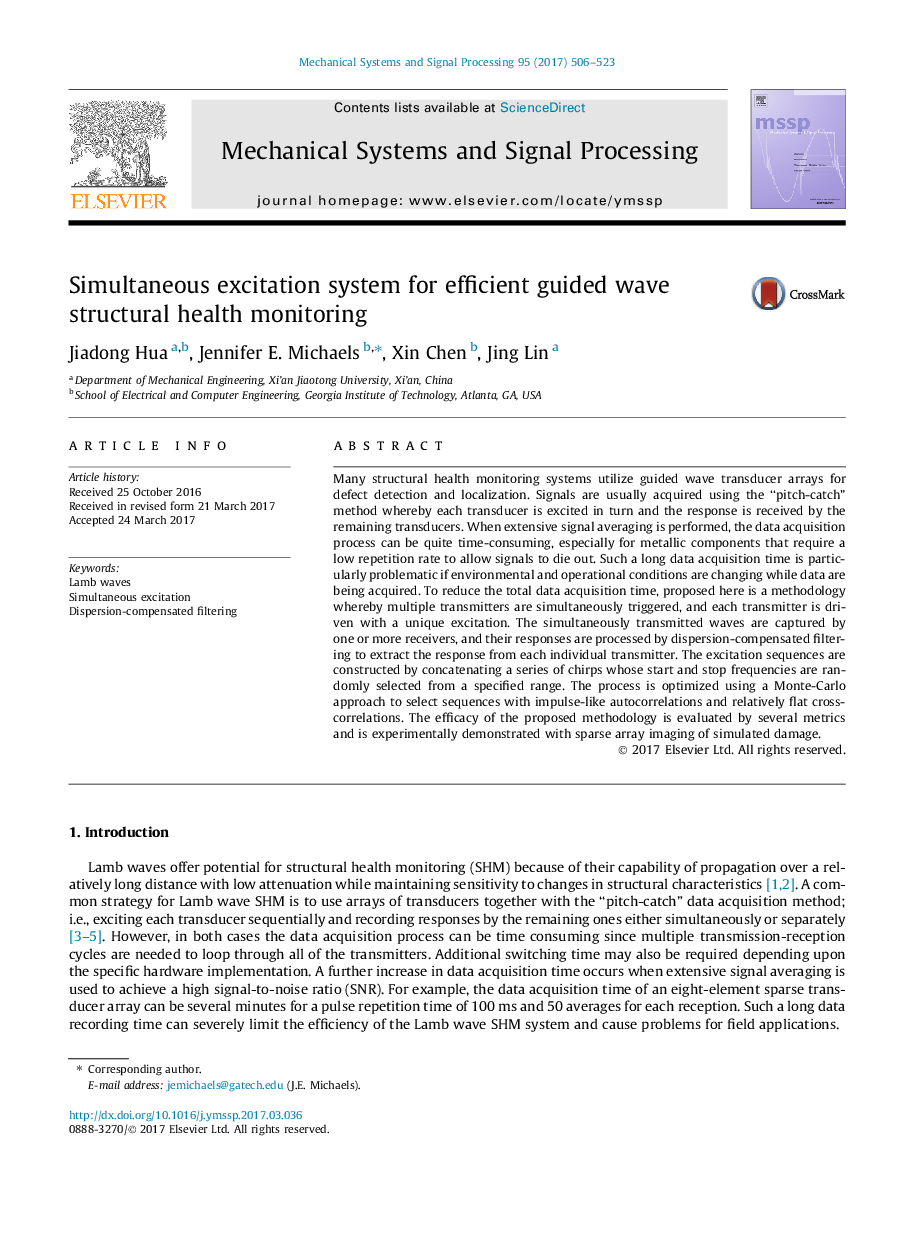| Article ID | Journal | Published Year | Pages | File Type |
|---|---|---|---|---|
| 4976823 | Mechanical Systems and Signal Processing | 2017 | 18 Pages |
Abstract
Many structural health monitoring systems utilize guided wave transducer arrays for defect detection and localization. Signals are usually acquired using the “pitch-catch” method whereby each transducer is excited in turn and the response is received by the remaining transducers. When extensive signal averaging is performed, the data acquisition process can be quite time-consuming, especially for metallic components that require a low repetition rate to allow signals to die out. Such a long data acquisition time is particularly problematic if environmental and operational conditions are changing while data are being acquired. To reduce the total data acquisition time, proposed here is a methodology whereby multiple transmitters are simultaneously triggered, and each transmitter is driven with a unique excitation. The simultaneously transmitted waves are captured by one or more receivers, and their responses are processed by dispersion-compensated filtering to extract the response from each individual transmitter. The excitation sequences are constructed by concatenating a series of chirps whose start and stop frequencies are randomly selected from a specified range. The process is optimized using a Monte-Carlo approach to select sequences with impulse-like autocorrelations and relatively flat cross-correlations. The efficacy of the proposed methodology is evaluated by several metrics and is experimentally demonstrated with sparse array imaging of simulated damage.
Keywords
Related Topics
Physical Sciences and Engineering
Computer Science
Signal Processing
Authors
Jiadong Hua, Jennifer E. Michaels, Xin Chen, Jing Lin,
